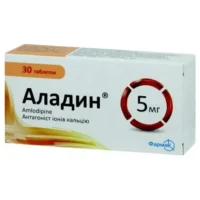Description
Ramizes Com (Ramipril, Hydrochlorothiazide) Tablets 5 mg/25 mg. №30
Ingredients
- Ramipril: 5 mg
- Hydrochlorothiazide: 25 mg
Dosage
The recommended dosage is one tablet daily. Follow the instructions provided by your healthcare provider.
Indications
Ramizes Com tablets are used for treating hypertension in patients who need both ramipril and hydrochlorothiazide.
Contraindications
Avoid using Ramizes Com tablets if you are allergic to any ingredients, have a history of angioedema from previous ACE inhibitor therapy, or have severe renal impairment.
Directions
Take one tablet orally with a full glass of water. Consistency is important for optimal results, and it can be taken with or without food.
Scientific Evidence
Ramizes Com tablets have shown superior blood pressure-lowering effects compared to using ramipril or hydrochlorothiazide alone. Clinical trials and meta-analyses have demonstrated the efficacy of this combination therapy in reducing cardiovascular events associated with hypertension.
Additional Information
- Monitor electrolyte levels and renal function regularly while taking Ramizes Com tablets.
- Inform your healthcare provider about other medications or supplements you are taking to avoid potential interactions.
- If you experience dizziness, lightheadedness, or swelling, contact your doctor immediately as these could indicate a serious reaction requiring medical attention.





